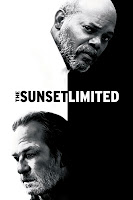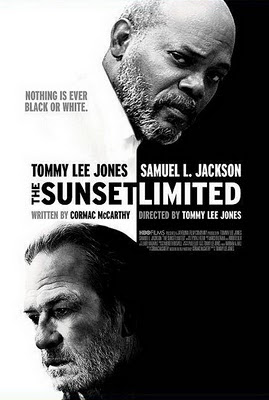>
Volumes 1–3 of Karl Ove Knausgård’s Min kamp (My Struggle) were the most crushing, honest and valuable books for me last year. Good thing there are three more volumes to read. Holy shit. I can’t wait.
So, the list of good books I read from 2011’s batch goes like this (mostly Swedish stuff):
Tomas Bannerhed – Korparna (Weyler förlag)
Roberto Bolaño – Amulett (Albert Bonniers förlag)
Mircea Cărtărescu – Dagbok. 1994–2003 (Albert Bonniers förlag)
Jacques Cazotte – Den förälskade djävulen (Malört förlag)
Noam Chomsky – Hopes and Prospects (Haymarket Books)
Magnus Dahlström – Spådom (Albert Bonniers förlag)
Crister Enander – Skiftande speglar (Bokförlaget h:ström – Text & Kultur)
Daniel Goldberg & Linus Larsson – Svenska hackare (Norstedts)
Ted Goldberg – Legalisera narkotika? Ett diskussionsunderlag (Academic Publishing of Sweden)
Michel Houellebecq – Kartan och landskapet (Albert Bonniers förlag)
Ika Johannesson & Jon Jefferson Klingberg – Blod Eld Död (Alfabeta förlag)
Karl Ove Knausgård – Min kamp 1–3 (Norstedts)
Jon Kristiansen – Metalion: The Slayer Mag Diaries (Brazillion Points)
H.P. Lovecraft – Cthulhu vaknar och andra ohyggligheter (Hastur förlag)
H.P. Lovecraft – Skräcknoveller (Vertigo förlag)
Kristian Lundberg – Och allt skall vara kärlek (Ordfront förlag)
Arthur Machen – Den röda handen (Hastur förlag)
Markis de Sade – Juliette del 5–6 (Vertigo förlag)
To begin with, four movies that I haven’t seen yet. I believe they are more than ok:
Le Havre (Ari Kaurismäki), Play (Ruben Östlund), Shame (Steve McQueen), The Adventures of Tintin (Steven Spielberg) and Tyrannosaur (Paddy Considine). I need to check these out ASAP.
My favourite movies of 2011:
The Sunset Limited (Tommy Lee Jones) [blog post]
1UP – One United Power
Tinker Tailor Soldier Spy (Tomas Alfredson)
Martha Marcy May Marlene (Sean Durkin)
I Love Trains – The Movie
Bobby Fischer Against The World
Jens Pulver: Driven
Kill List
Margin Call
Pearl Jam Twenty
Rango
Warren Ellis: Captured Ghosts
Zeitgeist: Moving Forward [blog posts]
Some truly great movies unleashed in 2010 that I saw later on in 2011:
Biutiful, Black Swan, Blue Valentine, Incendies, Inside Job, Into Eternity [blog post], Senna.
40 Watt Sun
The Inside Room
Cyclone Empire
This is THE album of 2011 for me. Total bölfezt.
The lyrics are truly soul crushing and the music is overwhelming. I ain’t got much more to say, but if you like this one you need to check out all releases by Warning as well. Pretty much the same band.
Restless, the opening song of The Inside Room, is available here (original version) and here (acoustic version). They are both equally amazing.
40 Watt Sun is playing the Roadburn festival in Tilburg this year. I’m gonna hide in the back and probably cry my eyes out.
Counterblast
Nothingness
Alerta Antifascista
This is – by far – one of the very best bands ever. Inspired by Neurosis and Amebix, rising from the ashes of the unparalleled grindcore band G-Anx, these dudes and their music are unique in a world of conformity. All of their stuff is top notch, their old songs having more of a crust edge to them (listen to Prospects (1995)).
They’re getting slower and more powerful for every album, and on Nothingness I can feel the vibes of the mighty Wovenhand and Morte Macabre, so you better start drooling. This is their most consistent release to date.
It’s hard to describe their style, but apocalyptic beauty, darkness and melancholy might say something about the atmosphere. Just listen to The Truth Will Remain and bend over.
 In Solitude
In Solitude
The World. The Flesh. The Devil.
Metal Blade
I couldn’t wrap my head around In Solitude’s debut album. I wanted to worship, but I just couldn’t do it. I really can’t put my finger on what was keeping me away. It’s far from bad, but I just didn’t get it. Great lyrics, ok songs and such, but not as good as I wanted it to be.
Everything, and I mean everything, changed when I got a hold of this masterpiece. This is the essence of occult heavy metal darkness. It’s like a sinister and dense version of the kings of the genre (Mercyful Fate), performed by highly dedicated freaks. And this time the songwriting is nothing but flawless, it’s just fucking epic.
Their upcoming tour with Watain, The Devil’s Blood and Behemoth should be killer.
———-
 Looking For An Answer
Looking For An Answer
Eterno Treblinka
Relapse Records
I can’t even remember the last time I heard a seriously good grindcore record. As I write this I’ve just heard a couple of songs off the new albums by Napalm Death and Terrorizer – bands who once were gods of grindcore. That was a long time ago, in a galaxy far, far away, and now they aren’t really that interesting. The new songs may be good, but they sound like shit. Modern day metal production was what made grindcore so terribly boring in the first place, and these guys haven’t learned a thing since 1990 (Napalm Death) and 1989 (Terrorizer) respectively. In my mind, grindcore should sound like Napalm Death’s Peel sessions, Arsedestroyer’s Teen Ass Revolt, or when it gets technical and/or metallized, like Assück’s masterpiece Misery Index (listen to the whole album here).
Lo and behold! In 2011 God gave us the new Looking For An Answer assault, and holy shit, this one is a killer! Hail to Spain! Mixing the finest bits of grindcore, crust punk and old school death metal, Eterno Treblinka rocks all the way through. Great hooks, quite memorable songs, awesome production (punkish, but yet with a thick wall of sound) and funky nods to what once was (Running Through The Blood is a Fear of God cover (the great band from Switzerland), and starts off just like the old Master song by Master – awesome! Original live version here and LFAA cover here). The vocals could use some variation in style, maybe, but what the heck… I like it raw and brutal, and I got all hyped up about this release, so if you once enjoyed old school crunchy grindcore back in the day, you might want to give this one a couple of spins.
I had the chance to check out LFFA on stage once, and they were awesome live as well.
If you’ve got Spotify you’ll find it here.
———-
Rite
Lie In Wait For Blood
EEE Recordings
The best black metal release 2011 – alongside Burzum – was executed by two unknown personas hailing from Sweden. I posted an article about them here and wrote a piece for Sweden Rock Magazine #89 (the massive Ronnie James Dio tribute issue). Listen to the demo on the bandcamp site or log on to Spotify.
I’m listening to a new song right now, Juridical Doctrine, and it fucking slays! One riff running for 8 minutes. Sheer brilliance. If you’ve got the slightest interest in Deathspell Omega, Ofermod, Malign, Negative Plane, Mgła, Funeral Mist and the likes, you need to check out Rite. Now.
———-
 Roffe Ruff
Roffe Ruff
Barrabas
Download here
Two years ago I declared Roffe’s debut Ormar i gräset the number one album of 2009. With Barrabas, his third and final statement, his career is over. At least for now. And by the way he’s saying it in the last song, I think he really means it. Whatever happens, this album is as solid as it gets, and – to quote the UFC – as real as it gets. People cry when they listen to Fröken Anderberg, because this is stuff everyone can relate to. It’s about life, and life pretty much sucks, so of course it’s depressing. If you’re not affected by this, your life is too good.
However, Mr. Rolf’s got the humour and wits to back it all up and make this a true feast. Roffe’s a truth-teller of epic proportions (L.I.M.B.O.).
Of all three albums, this one is easily the best, although all of them must be downloaded and worshipped. He’s really that good, so do believe the hype. I’d say even if you don’t understand Swedish, this gem is worth the download. The production is crisp as fuck, and I believe you can hear this dude’s honesty just by listening to his voice.
R.I.P.
———-
Anima Morte – The Nightmare Becomes Reality
Arckanum – Helvítismyrkr
Autopsy – Macabre Eternal
Nicklas Barker – El Último Fin de Semana
Barn Owl – Lost In The Glare
Björk – Biophilia
Blodigt Allvar – Promo 2011
Bohren Und Der Club of Gore – Beileid
Bong – Beyond Ancient Space
Bonnie Prince Billy – Wolfroy Goes To Town
Brighter Death Now – Very Little Fun
Burzum – Fallen
Craft – Void
Deutsch Nepal – Amygdala
Erik Enocksson – Apan
The Giesagöebbels – Demo 2011
Gösta Berlings Saga – Glue Works
Hell – Human Remains
Hills – Master Sleeps
Invidious – In Death
Krux – He Who Sleeps Amongst The Stars
Macabre – Grim Scary Tales
J. Mascis – Several Shades of Why
Mogwai – Hardcore Will Never Die, But You Will
Morbus Chron – Sleepers In The Rift
Necros Christos – Doom of The Occult
Opeth – Heritage
Pentagram – Last Rites
Plastikman – Arkives 1993 – 2010
Portrait – Crimen Laesae Majestatis Divinae
Primordial – Redemption At The Puritan’s Hand
Primus – Green Naugahyde
Pyramido – Salt
Ravencult – Morbid Blood
Reveal – Nocturne of Eyes And Teeth
Swarm – 2011
Teitanblood – Purging Tounges
Terra Tenebrosa – The Tunnels
Today Is The Day – Pain Is A Warning
Tormented / Bombs of Hades – Split
Undergång – The Mother of Armageddon
US Christmas – The Valley Path
Usurpress – In Permanent Twilight
Vanhelgd – Church of Death
Victims – A Dissident
White Hills – H-p1
Year of The Goat – Lucem Ferre
Yob – Atma














